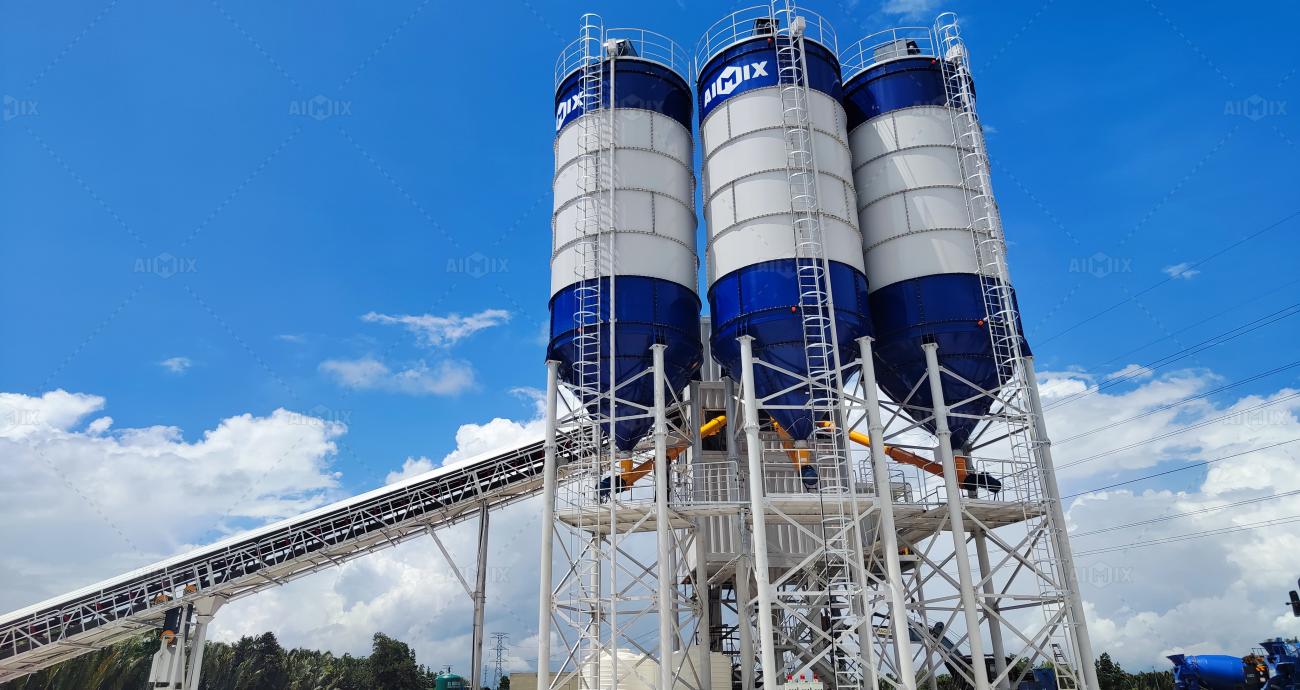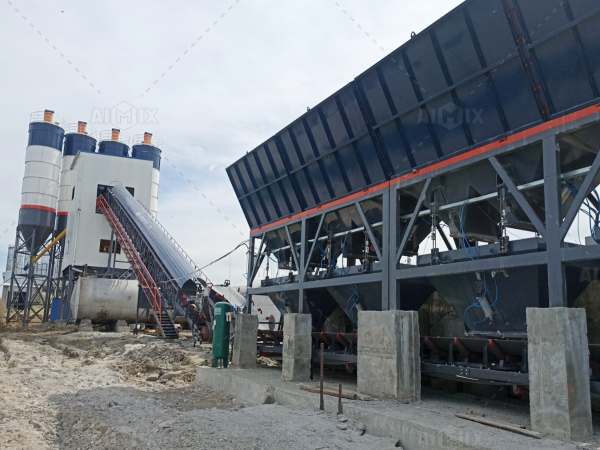As urban development accelerates and land becomes increasingly scarce and expensive, especially in fast-growing regions like Southeast Asia, construction companies are actively seeking efficient solutions that reduce operational footprint without sacrificing performance. One area that has seen significant innovation is the concrete batching plant, a critical piece of infrastructure for ready-mix and onsite concrete production.
Recent years have witnessed a wave of structural innovations in batching plant design, particularly aimed at improving space utilization. Whether you're looking for a batching plant for sale or evaluating compact options for dense urban sites, understanding these developments is key to making a smart investment.

Traditionally, batching plants have required large horizontal areas for material storage and movement. However, the vertical design trend has revolutionized this model. In vertical plants, cement silos, aggregate hoppers, and mixing towers are arranged vertically rather than horizontally. This layout brings several advantages:
In Malaysia, cities like Kuala Lumpur, Penang, and Johor Bahru are increasingly adopting these compact vertical solutions, especially near high-rise developments and infrastructure hubs.
Another breakthrough in structural efficiency is the modular batching plant, which is designed to be assembled and disassembled quickly using pre-engineered modules.
Many suppliers offering batching plant for sale in Malaysia now include modular models in their portfolios. These are particularly popular with contractors who manage multiple short-term projects and need the flexibility to relocate equipment quickly.
Innovations in aggregate storage have also contributed to space-saving designs. Older batching plants often used sprawling ground-level storage bins or stockpiles. New designs feature:
In the Malaysian context, where construction sites are often squeezed between existing developments, these integrated storage systems can drastically reduce setup area while maintaining high capacity.

For remote or temporary projects, mobile batching plants with skid-mounted structures are a major leap in design efficiency. These units:
This makes them ideal for projects in Malaysia's more remote regions such as Sabah and Sarawak, where transport infrastructure may be underdeveloped. Companies looking for batching plant for sale in Malaysia with mobility features now have more compact and transport-friendly options than ever before.
In extremely dense areas or high-value urban zones, some cutting-edge batching plants are being designed with partial underground installations. This includes:
Though more complex to install, this design minimizes above-ground interference and blends better with the surrounding environment. In areas with strict planning regulations—common in Malaysian urban municipalities—this offers a creative solution to land use limitations.
Modern batching plants often integrate advanced control systems that not only automate operations but also optimize the physical layout of the plant. Features include:
Suppliers offering batching plant for sale in Malaysia frequently promote such features as value-adds for contractors concerned with both performance and footprint.
Finally, structural innovation is no longer limited to off-the-shelf solutions. Many manufacturers now offer custom plant layout services, leveraging 3D modeling and simulation to fit batching plants into highly constrained job sites. This is particularly useful in Malaysia’s mixed-use construction zones where site access, utilities, and existing structures complicate equipment placement.

As demand grows for sustainable, efficient, and space-conscious construction practices, the structural design of batching plants has become a focal point of innovation. Whether through vertical configurations, modular construction, or underground integration, today’s batching plants are smarter and more compact than ever.
For contractors in Southeast Asia, and especially those evaluating batching plant for sale in Malaysia, these structural innovations offer a path to maximize productivity while minimizing space and cost. Selecting the right structural configuration is no longer just a technical decision—it’s a strategic one.